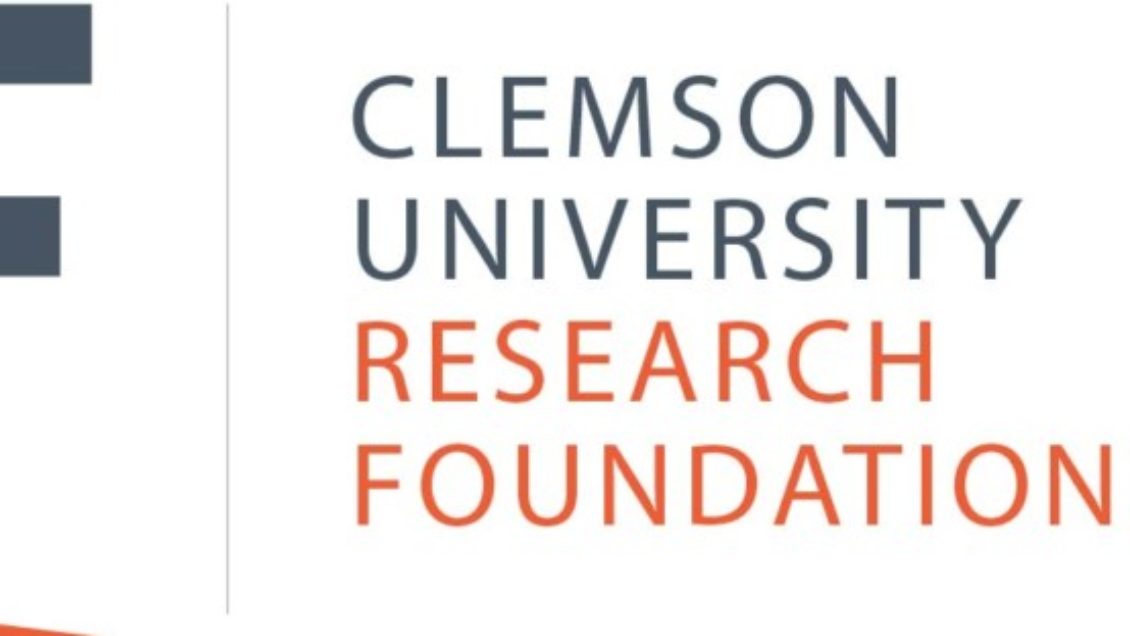 CLEMSON — The Clemson University Research Foundation (CURF) has announced seven researchers will be awarded fiscal year 2020 Technology Maturation Fund grants to support them as they embark on the crucial last stage needed to move their technology from innovation to commercialization.
CLEMSON — The Clemson University Research Foundation (CURF) has announced seven researchers will be awarded fiscal year 2020 Technology Maturation Fund grants to support them as they embark on the crucial last stage needed to move their technology from innovation to commercialization.
“The Technology Maturation Fund initiative assists in shaping a pathway for innovation and providing Clemson faculty with the unique opportunity to further their technological development,” said Chris Gesswein, CURF’s executive director. “The program has repeatedly demonstrated that targeted, strategic investments can have a significant impact on the probability of commercial licensing, industry collaboration or follow-on research dollars. Congratulations to the recipients for their dedication to academic research and for the innovative contributions they have made to the Clemson University research enterprise.”
Since the Technology Maturation Fund program launched in 2014, CURF has awarded more than $870,000 in maturation funds to Clemson researchers.
This year’s awards range from approximately $6,000 to $39,000 and were granted to:
- Jeremy Mercuri, associate professor in the department of bioengineering, to further develop a new biomimetic osteochondral construct to be used in the repair of critically sized focal osteochondral defects through testing. This method doesn’t suffer from the traditional drawbacks many other treatments do that can lead to lower quality repair tissue, complications at the donor site, higher costs and the inability to integrate repair tissue with the surrounding healthy tissue.
- Mark Roberts, associate professor in the department of chemical and biomolecular engineering, to continue development of a new type of electrode material for energy storage — carbon nanotubes with confined redox-active iron nanoparticles — that allows faster charge transfer rates and more than a five-fold increase in power density relative to redox flow batteries. This new material provides a more efficient, inexpensive process with less voltage loss and the ability to use more abundant metals.
- Christopher Saski, associate professor in the department of plant and environmental sciences, to advance a new biotechnology involving extra-chromosomal circular DNA in the Amaranthus palmeri plant species, which contains and expresses genes and biochemical pathways that can facilitate gene copy number increases and mitotic stability. This technology enables targeted gene amplification and the engineering of the expression of complex crop genes to exhibit agronomically beneficial traits while simultaneously reducing engineering constraints, such as silencing, low-copy number and non-target effects.
- Erica Walker, assistant professor in the department of graphic communications, in collaboration with Hudson Smith, research associate in analytical systems and applications, to continue development of ColorNet, a color-management system based on Neural Networks, which takes in color-incorrect images and automatically outputs color-correct images when displaying brand colors on Jumbotrons. This correction alters only brand-specific sections of the image, as improperly displayed brand colors can negatively impact the brand and fan experience.
- Daniel Whitehead, associate professor in the department of chemistry, to continue development of a new method for the synthesis of diazacyclobutene molecules. This technology produces an effective concentration of drug capable of killing 50% of blood-stream form parasites in observed cultures. This molecular scaffolding has the potential to manage Human African Trypanosomiasis, a neglected tropical disease with only a handful of effective drug therapies, most of which cause significant, even lethal, adverse side effects.
- Dan Simionescu, professor in the department of bioengineering, to further develop a technology that efficiently seeds cells into scaffolds or tissues at multiple locations with high efficacy. Current methods of seeding cells are limited to static or injection seeding, which do not ensure uniform cell distribution or penetration of cells into scaffolds. This technology can seed millions of cells in a controlled pattern via a roller, which can improve regenerative medical and cellular therapy techniques. *This project was funded in conjunction with the department of bioengineering.
- Victor Zordan, professor in the School of Computing, to continue the exploration of computer-controlled embroidery design and stitching, which covers the making of purposeful, precision changes to material properties of a base textile. This technique can increase the local tensile strength of a 4-way-stretch fabric, up to 10 times the original amount, to create tailored distributions of mechanical properties in the resulting embroidered materials.
Clemson University Research Foundation
The Clemson University Research Foundation manages technology transfer for Clemson’s thriving innovation environment. Established in 1981, CURF is a 501(c)(3) corporation founded exclusively for charitable, educational and scientific purposes. CURF operates for the benefit of, to perform the functions of and to carry out the purposes of Clemson University. CURF is governed by a board of directors who are leaders in the public and private sectors.
CURF will be accepting applications for the fiscal year 2021 Technology Maturation Fund this spring, the RFP release and proposal deadlines to be announced. For more information, visit curf.clemson.edu or contact the CURF office at curf@clemson.edu.
Get in touch and we will connect you with the author or another expert.
Or email us at news@clemson.edu

